Related Research Articles

James I was King of Scots from 1406 until his assassination in 1437. The youngest of three sons, he was born in Dunfermline Abbey to King Robert III and Annabella Drummond. His eldest brother David, Duke of Rothesay, died under suspicious circumstances while detained by his uncle, Robert, Duke of Albany. James's other brother, Robert, died young. Concerns for James's safety deepened in the winter of 1405–1406 prompting plans to send him to France. In February 1406, James took refuge in the castle of the Bass Rock in the Firth of Forth after his escort was attacked by supporters of Archibald, 4th Earl of Douglas. He remained there until mid-March when he boarded a vessel bound for France. On 22 March, an English vessel captured the ship and delivered James to Henry IV of England. The ailing Robert III died on 4 April and the 11-year-old James, now the uncrowned King of Scotland, would remain in captivity for eighteen years.

Robert II was King of Scots from 1371 to his death in 1390. The son of Walter Stewart, 6th High Steward of Scotland, and Marjorie, daughter of King Robert the Bruce, he was the first monarch of the House of Stewart. Upon the death of his uncle David II, Robert succeeded to the throne.
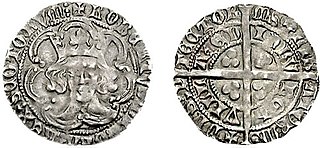
Robert III, born John Stewart, was King of Scots from 1390 to his death in 1406. He was also High Steward of Scotland from 1371 to 1390 and held the titles of Earl of Atholl (1367–1390) and Earl of Carrick (1368–1390) before ascending the throne at about the age of 53 years. He was the eldest son of King Robert II and Elizabeth Mure and was legitimized by the second marriage of his parents and by papal dispensation in 1349.
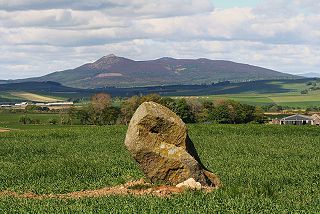
The Battle of Harlaw was a Scottish clan battle fought on 24 July 1411 just north of Inverurie in Aberdeenshire. It was one of a series of battles fought during the Middle Ages between the barons of northeast Scotland and those from the west coast.

Robert Stewart, Duke of Albany was a member of the Scottish royal family who served as regent to three Scottish monarchs. A ruthless politician, Albany was widely regarded as having murdered his nephew, the Duke of Rothesay, and brother to the future King James I of Scotland. James was held in captivity in England for eighteen years, during which time Albany served as regent in Scotland, king in all but name. He died in 1420 and was succeeded by his son, Murdoch Stewart, Duke of Albany, who was executed for treason when James returned to Scotland in 1425, almost causing the complete ruin of the Albany Stewarts.

Alexander Stewart, Earl of Buchan, called the Wolf of Badenoch, was a Scottish royal prince, the third son of King Robert II of Scotland by his first wife Elizabeth Mure. He was Justiciar of Scotia and held large territories in the north of Scotland.
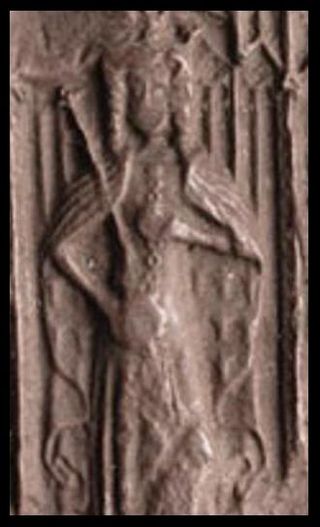
Murdoch Stewart, Duke of Albany was a leading Scottish nobleman, the son of Robert Stewart, Duke of Albany, and the grandson of King Robert II of Scotland, who founded the Stewart dynasty. In 1389, he became Justiciar North of the Forth. In 1402, he was captured at the Battle of Homildon Hill and would spend 12 years in captivity in England.
The Earl or Mormaer of Ross was the ruler of the province of Ross in northern Scotland.
Hugh [probably Gaelic: Aodh], was the third successor of Ferchar mac in tSagairt as Mormaer of Ross (1323–1333).
Euphemia I, also called Euphemia of Ross and Euphemia Ross, and sometimes incorrectly styled Euphemia Leslie and Euphemia Stewart, was a Countess of Ross in her own right.
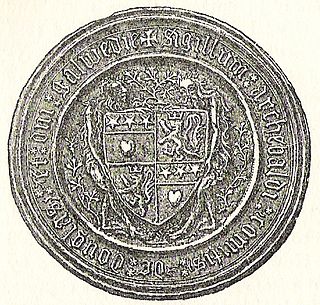
Archibald Douglas, 4th Earl of Douglas, Duke of Touraine, was a Scottish nobleman and warlord. He is sometimes given the epithet "Tyneman", but this may be a reference to his great-uncle Sir Archibald Douglas.
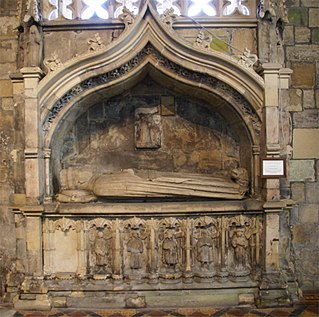
Archibald Douglas, 5th Earl of Douglas was a Scottish nobleman and general during the Hundred Years' War.

John Stewart, Earl of Buchan was a Scottish nobleman and soldier who fought alongside the Kingdom of France during the Hundred Years War. In 1419, he was sent to France by his father the Duke of Albany, Regent of Scotland, with a Scottish army of 6,000 men. Stewart led the combined Franco-Scottish army at the Battle of Baugé on 21 March 1421, where he comprehensively routed an English force under Thomas of Lancaster, Duke of Clarence.

Sir Walter Leslie was a 14th-century Scottish nobleman and crusader, one of the foremost knights of his time.
Alexander Leslie, Earl of Ross was a Scottish nobleman. Born between 1367 and 1382, he was the son of Walter Leslie, Lord of Ross and Euphemia I, Countess of Ross. In around 1394, or not later than 1398, he became Earl of Ross and sometime before 1398 he married Isabel Stewart, daughter of Robert Stewart, Earl of Fife who became Robert Stewart, Duke of Albany. They had one child, Euphemia. He died at Dingwall, Scotland on 8 May 1402.
Mariota, Countess of Ross was the daughter of Euphemia I, Countess of Ross and her husband, the crusading war-hero Walter Leslie, Lord of Ross. Upon the death of her brother, Alexander Leslie, Earl of Ross, she became the heiress presumptive of her niece Euphemia II, Countess of Ross although her husband Domhnall of Islay, Lord of the Isles pressed Mariota's superior claim to the earldom.
Mairead inghean Eachainn, also known as Mairead nic Eachainn, was a consort of Alexander Stewart, Earl of Buchan. She was the daughter of a man named Eachann, and probably the mother of several children, including Alexander's like-named son, Alexander Stewart, Earl of Mar.

David Stewart, Prince of Scotland, was a 14th-century Scottish magnate. He was the eldest son of the second marriage of King Robert II with Euphemia de Ross. King Robert, on 26 March 1371, the day of his coronation, created him Earl of Strathearn, and on the following day his son David performed homage to his father as of Earl of Strathearn.
Euphemia Stewart, Countess of Strathearn was a medieval Scottish noblewoman, the daughter of David Stewart, Earl Palatine of Strathearn and Caithness. She succeeded to both her father's titles after his death between 1385 and 1389, probably March 1386.

Sir Alexander Lindsay of Glenesk was a Scottish knight banneret. Active in jousting and as a crusader he was in favour with the Scottish kings David II and Robert II.
References
- ↑ Paul, James Balfour, The Scots Peerage , Vol. VII, (Edinburgh, 1910)
- 1 2 Leslie, Charles Joseph (1869). Historical records of the family of Leslie from 1067 to 1868-69. Collected from public records and authentic private sources. Robarts - University of Toronto. Edinburgh Edmonston and Douglas.
- Brown, M. H. "Stewart, John, third earl of Buchan (c.1380–1424)". Oxford Dictionary of National Biography (online ed.). Oxford University Press. doi:10.1093/ref:odnb/26483.(Subscription or UK public library membership required.)
- Munro, R. W.; Munro, Jean. "Ross family (per. c.1215–c.1415)". Oxford Dictionary of National Biography (online ed.). Oxford University Press. doi:10.1093/ref:odnb/54308.(Subscription or UK public library membership required.)
- Paul, James Balfour, The Scots Peerage , Vol. VII, (Edinburgh, 1910)